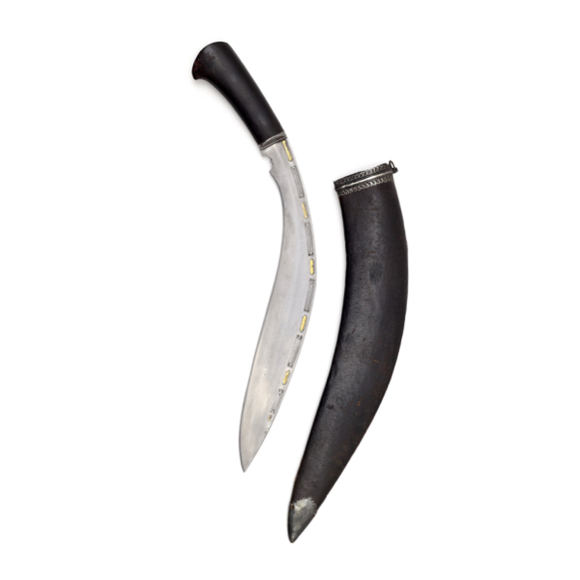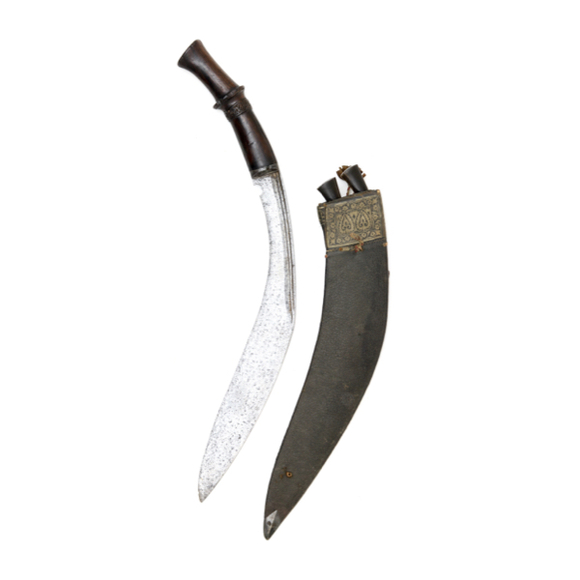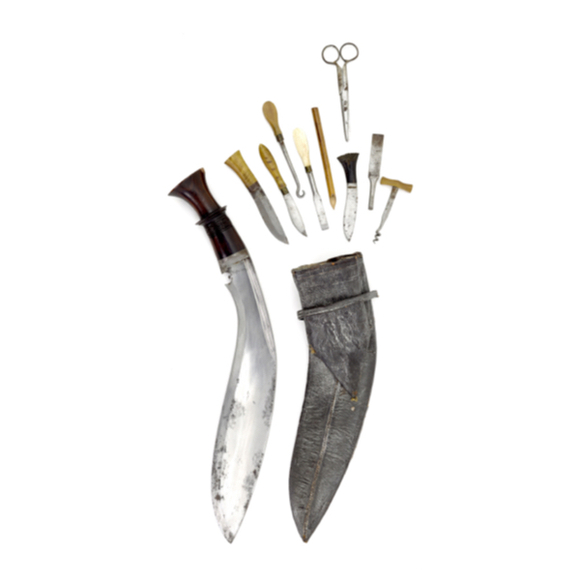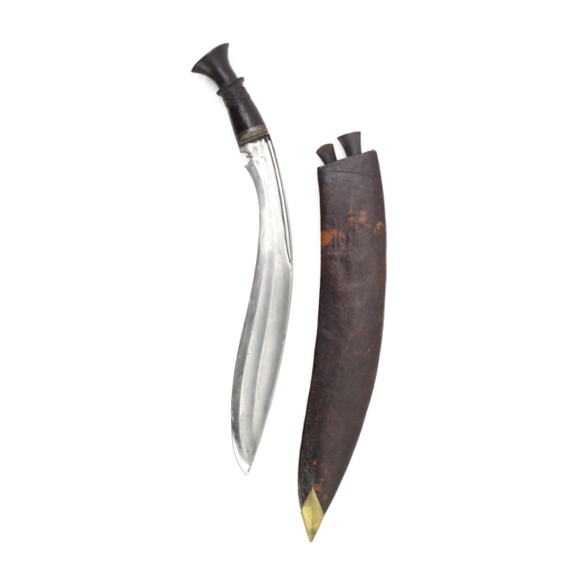Russet iron, one-piece construction with decorative grooves.

67.4 cm
54.5 cm
Base 9 mm
Middle 5 mm
5 cm from tip 3 mm
Base 27 mm
Middle 26.5 mm
5 cm from tip 22.5 mm
500 grams
14.8 cm from hilt
Iron, steel, buffalo horn, leather, cotton thread
Indonesia, probably Java
19th century
From a Dutch private collection
Description
This interesting saber combines European and Indonesian design elements. The blade appears to be locally made, but inspired by European sabers with a gently curved, single-edged blade. It has a wide fuller with a narrow fuller above it on either side. At the base, inside the large fuller are floral engravings.
The hilt consists of a piece of high-quality blonde buffalo horn, cut into a hexagonal cross-section. The handguard is in the form of a so-called "stirrup hilt". Such hilts became popular in Austro-Hungarian military sabers from around 1700 onwards but are probably best known for their appearance on the British 1796 pattern light cavalry saber which was in production between 1796-1821. The execution of the guard on this hilt is quite slender and hints towards it being Javanese work.
The leather scabbard reminds strongly of that of the Royal Netherlands East Indies Army (K.N.I.L.) klewang, both in overall design and construction. The only local touch is the band around the scabbard mouth, with a sideways protrusion that is customary on Indonesian scabbards, but never executed in leather like this.
It was probably made for an Indonesian who was in service of the Royal Netherlands East Indies Army, the scabbard possibly made by someone who normally made them for the klewang.












With a very fine Nepalese blade, but kard-like hilt and scabbard.
Early type with very shallow notch in the blade and little flare in the pommel.
20th century military khukurī with many different tools in its back pocket.






